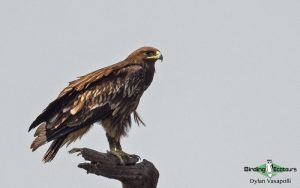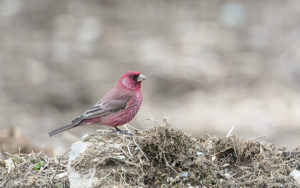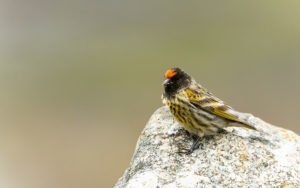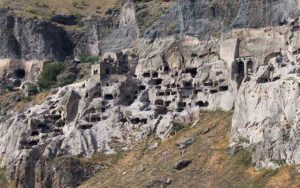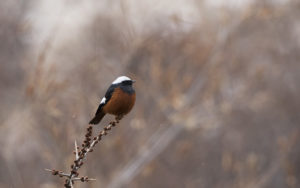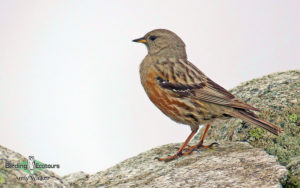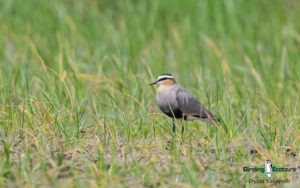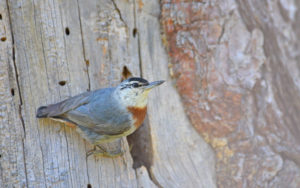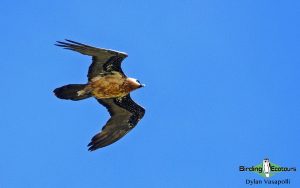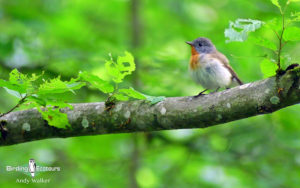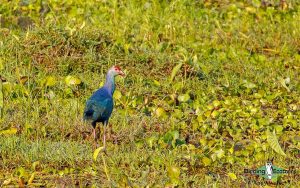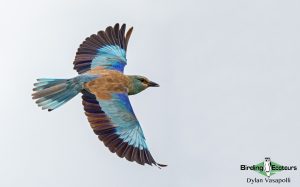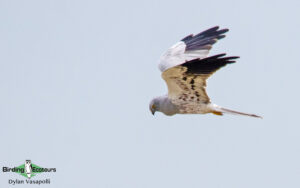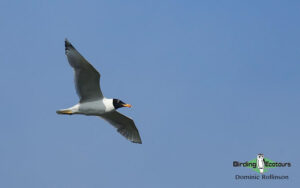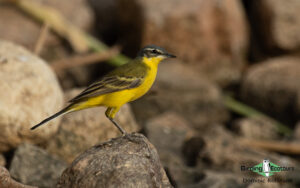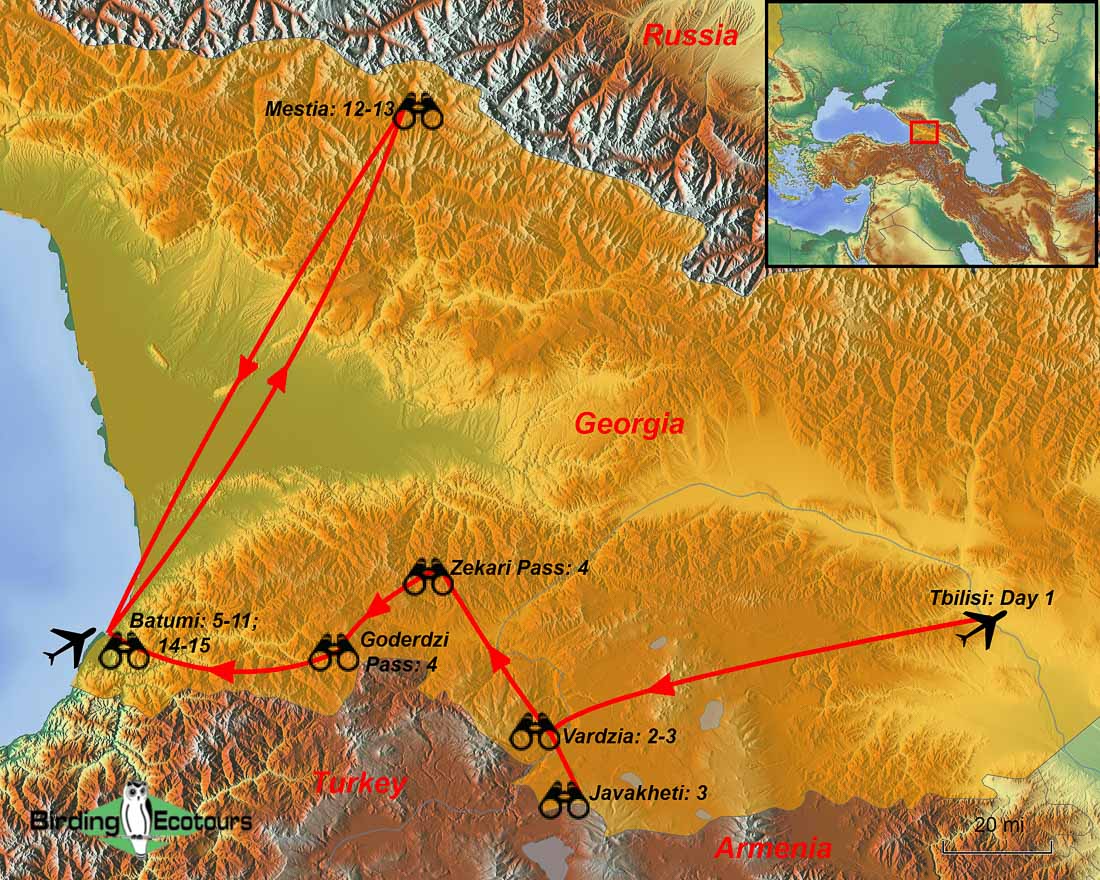Georgia: Eagles and Endemics in Fall
Georgia Birding Tour: Eagles and Endemics in Fall
September 2026
We are absolutely delighted to introduce this incredibly exciting bird tour for an exclusive, small group (maximum of eight for a full group, guaranteed departure with just six), to the beautiful country of Georgia. Due to the nature of the birding on this tour, the small group environment will allow for a much better overall experience than that offered in a larger group.
Situated on the narrow strip of land between the Black Sea and Caspian Sea, Georgia is the bridge between Europe and Asia. This position results in a stunning array of bird species from both continents, and beyond. Georgia’s bird list stands at 424 species (following International Ornithological Congress (IOC) taxonomy v13.1 in July 2023), impressive for a relatively small country, with many of these birds being highly sought-after by birders from all over the world, due to their localized global distribution or the difficulty associated with accessing them in the rest of their range. Some of the key species that we look for include Caucasian Snowcock, Caspian Snowcock, Caucasian Grouse, Great Rosefinch (Caucasian endemic rubicilla subspecies), and Güldenstädt’s Redstart, often referred to as Georgia’s “Big Five”. Other birds we hope to find during the tour include Bearded Vulture, Dalmatian Pelican, Pallas’s Gull, Armenian Gull, Sociable Lapwing, Alpine Chough, Green Warbler, Mountain Chiffchaff (local lorenzii subspecies and a potential split), Krüper’s Nuthatch, Red-fronted Serin, and Alpine Accentor.
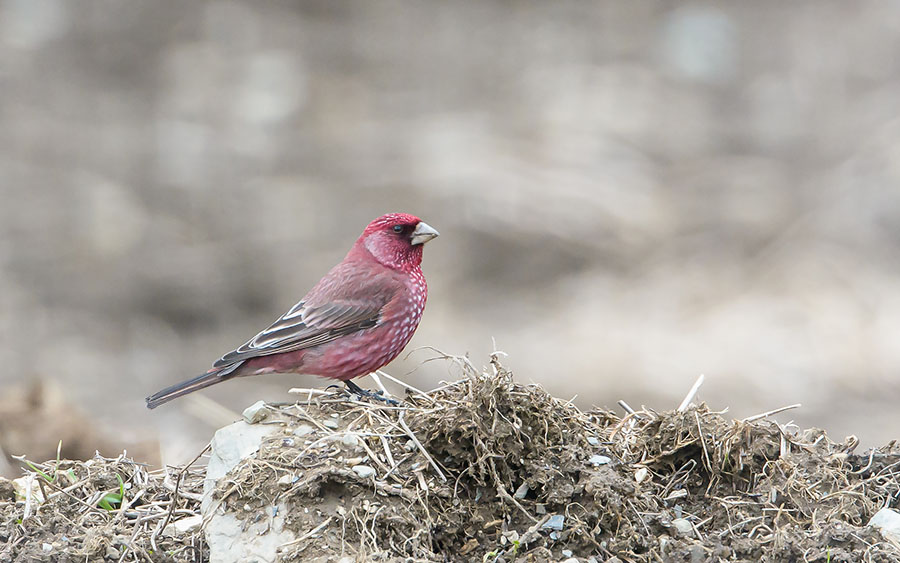
The region is also famed for several localized “Caucasian subspecies”, with Horned (Shore) Lark (penicillata subspecies), Water Pipit (coutelli subspecies), and Twite (brevirostris subspecies) being the best documented, and those most likely to be raised to full species status in the future. In addition to the aforementioned interesting species, Georgia also witnesses the incredible spectacle of over one million birds of prey moving along the Black Sea coast each fall, something very special indeed! The above all makes Georgia an exciting and “must visit” country for a birdwatching holiday, but do not just take our word for it, come and observe it all for yourselves!
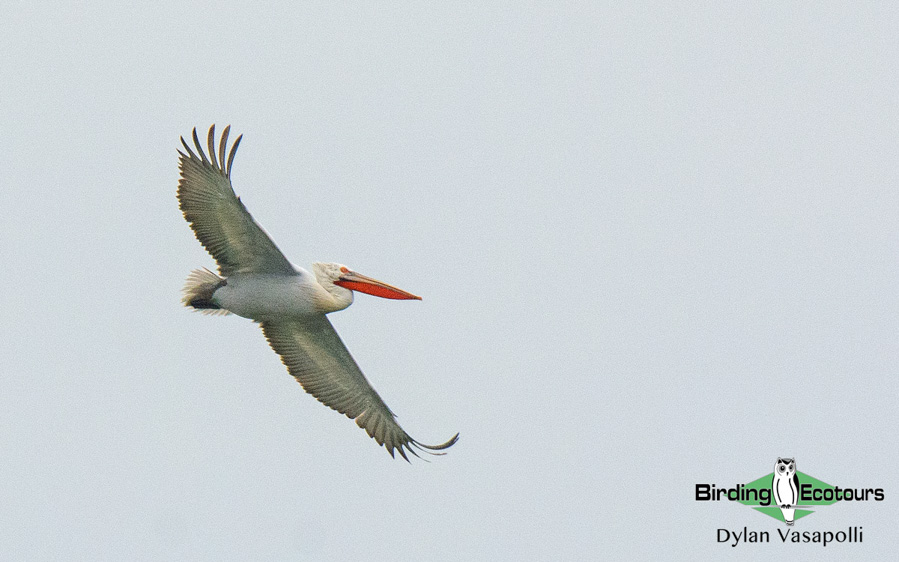
The region is also famed for several localized “Caucasian subspecies”, with Horned (Shore) Lark (penicillata subspecies), Water Pipit (coutelli subspecies), and Twite (brevirostris subspecies) being the best documented, and those most likely to be raised to full species status in the future. In addition to the aforementioned interesting species, Georgia also witnesses the incredible spectacle of over one million birds of prey moving along the Black Sea coast each fall, something very special indeed! The above all makes Georgia an exciting and “must visit” country for a birdwatching holiday, but do not just take our word for it, come and observe it all for yourselves!
This thrilling two-week small group birdwatching tour starts in the ancient capital city of Tbilisi and from the moment we arrive we will likely see bird of prey migration in action with Black Kite and Common Buzzard (of the migratory vulpinus subspecies, sometimes split as Steppe Buzzard) likely to be visible almost immediately! We will head southwest, through the country’s interior towards the volcanic region of Javakheti, on the border with Turkey and Armenia. Along the route we will make numerous birding stops to take in the wonderful birdlife of this region. Key species from this part of the tour include Calandra Lark, Long-legged Buzzard, Krüper’s Nuthatch, Golden Eagle, Eurasian Eagle-Owl, Eurasian Crag Martin, Western Rock Nuthatch, Red-fronted Serin, Mountain Chiffchaff, Bearded Vulture, and much more.
Arriving in Javakheti, we will explore the ancient lakes of this volcanic region. Thousands of wildfowl will greet us, with the most impressive being hundreds of stunning Ruddy Shelduck. We may also come across the incredibly rare Caucasian subspecies of Common Crane (archibaldi) among the numerous nominate Common Crane. While here, we also have a chance of seeing Dalmatian Pelican and birds of prey like Hen Harrier and Rough-legged Buzzard. Passerine highlights could include Bluethroat, Sedge Warbler, and Citrine Wagtail, plus many more common species. From Javakheti we move west into the Lesser Caucasus Mountains for our first taste of mountain birding. This is a beautiful area where we can get to grips with fascinating species like Caspian Snowcock, Alpine Accentor, Alpine Chough, and Water Pipit. The stunning scenery here should also keep us occupied; it is a seriously beautiful part of the world.
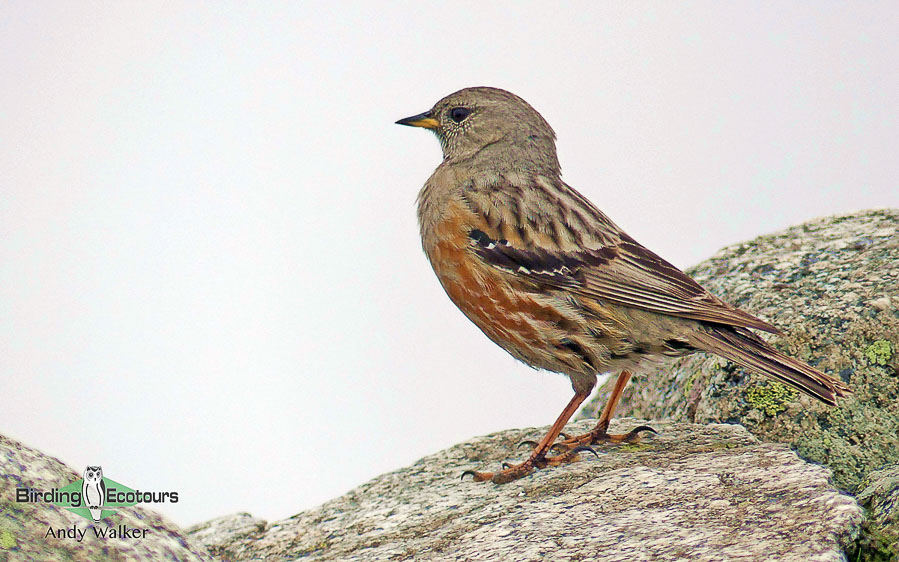
After the above mountain birding, we will arrive on the Black Sea coast in the bustling city of Batumi. We will spend the next week exploring the wonderous “Batumi Bottleneck” and its surrounding key birdwatching sites (this whole area is an Important Bird Area (IBA), a site identified by BirdLife International as of global significance to birds). On top of witnessing the extraordinary bird of prey migration we will visit important sites to look for the huge number of other species that move through the area during fall. The list of possible species is vast, but targets include Red-breasted Flycatcher, Green Warbler, European Roller, Krüper’s Nuthatch, around a dozen migratory warbler species including Blyth’s Reed Warbler and Paddyfield Warbler, multiple wheatear, pipit, and lark species, numerous herons, crakes, and bitterns, and vast numbers of shorebirds (waders), wildfowl, gulls, and terns. There is also the chance of finding some true Western Palearctic rarities like Pallas’s Gull and Blue-cheeked Bee-eater.
We will also explore areas further away from the bottleneck, like the beautiful Mtirala Forest Park, with its vast array of forest specials like White-throated Dipper, Black Woodpecker and White-backed Woodpecker, and Kokheti National Park, where we will take a boat trip on the vast Paliastomi Lake for White-tailed Eagle, Osprey, Common Kingfisher, Armenian Gull, and others.
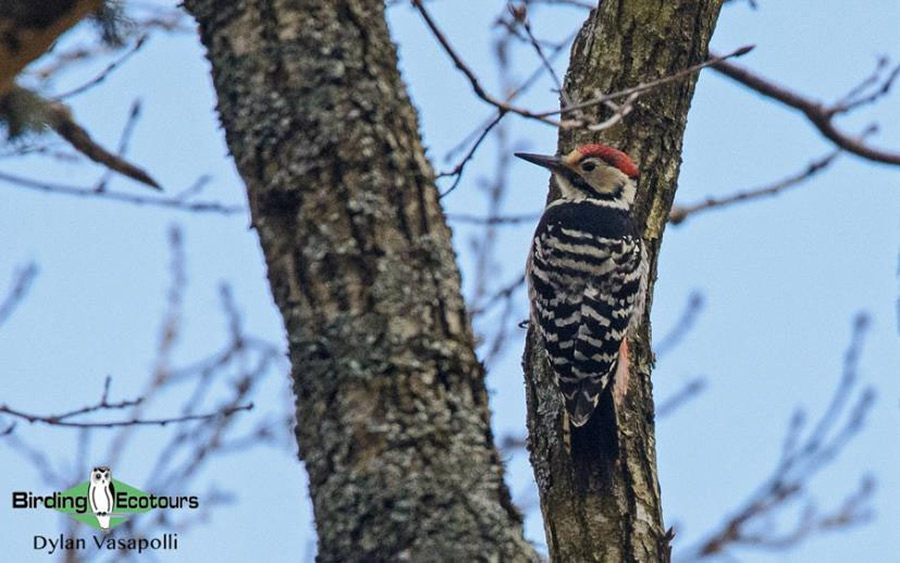
After enjoying our days on the Black Sea coast, we will move north towards the Greater Caucasus mountain range. We will head for the region of Svaneti, one of the wildest areas in Georgia, and it is here we will spend time searching for more special birds, including the regionally endemic Caucasian Snowcock and Caucasian Grouse, along with top European birds like Great Rosefinch, and Güldenstädt’s Redstart, with the addition of many more mountain specials. This remote area is full of fascinating wildlife including endemic flora and rare localized insects. After this unique birding opportunity, we return to Batumi, where the tour ends.
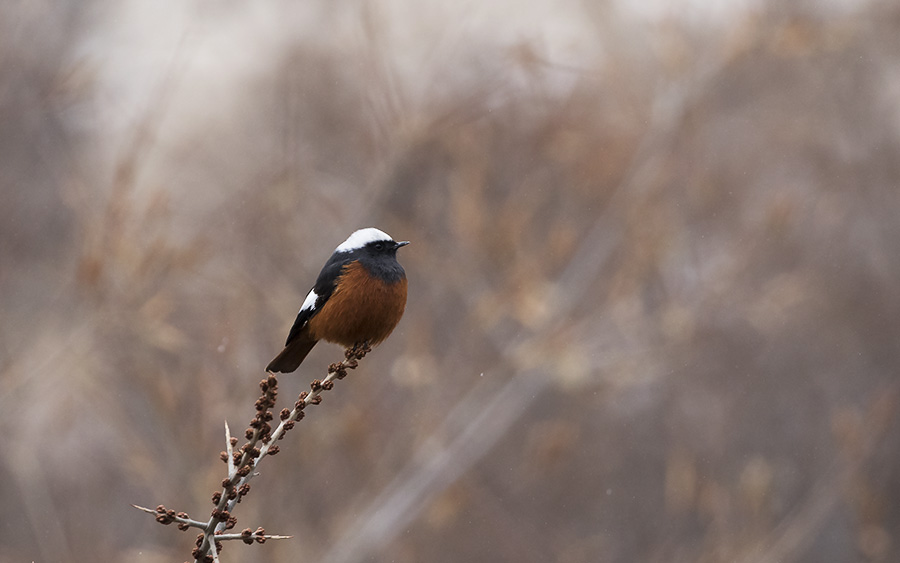
Itinerary (15 days/14 nights)
Day 1. Arrival in Tbilisi
Welcome to Caucasia! After your morning arrival at Tbilisi International Airport, you will be met by your Birding Ecotours tour leader and expert local bird guide. From here we will head southwest towards the Lesser Caucasus Mountains. On the way to this stunning location, we will pass through vast grasslands that line the mountains. Almost immediately the spectacle of bird of prey migration will be evident with good numbers of Black Kite and Common (Steppe) Buzzard likely to be present along this route. The grasslands here are also home to significant flocks of passerines like European Goldfinch, Twite, Common Linnet, Eurasian Skylark, and the rarer Calandra Lark.
We will arrive in the picturesque mountain town of Borjomi around lunchtime whereupon we will drop our luggage at our beautifully appointed hotel. After lunch we can take a leisurely birding walk around the town to local parks and patches of habitat that hold some great birds. Around the town we should have little trouble finding common species like Eurasian Tree Sparrow, White Wagtail, Common Chaffinch, Great Spotted Woodpecker, Eurasian Jay, Northern Raven, Coal Tit, Long-tailed Tit, Goldcrest, Eurasian Treecreeper, Eurasian Wren, Song Thrush, and Eurasian Siskin. The real star of Borjomi is the stunning Krüper’s Nuthatch. This beautiful species is reliable here, but if we do miss it, we will have other chances later in the tour.
Overnight: Borjomi
Day 2. Vardzia Cave Monastery
After a traditional Georgian breakfast (be prepared for a lot of food!) we head towards the drier region south of the Lesser Caucasus Mountains near Vardzia. We will again stop along the route to look for birds and the roadside here should hold similar species to yesterday’s drive from Tbilisi, with perhaps the bonus of Golden Eagle or Eurasian Eagle-Owl. We will also visit a large Eurasian Crag Martin colony en route. After lunch, which we will take near the town of Aspindza (the famous Georgian dish of Khachapuri is well worth trying here), which overlooks the Kura River, we will head for the town of Vardzia. This cave town is thought to be nearly 2,500 years old and makes a stunning backdrop for our birding here.
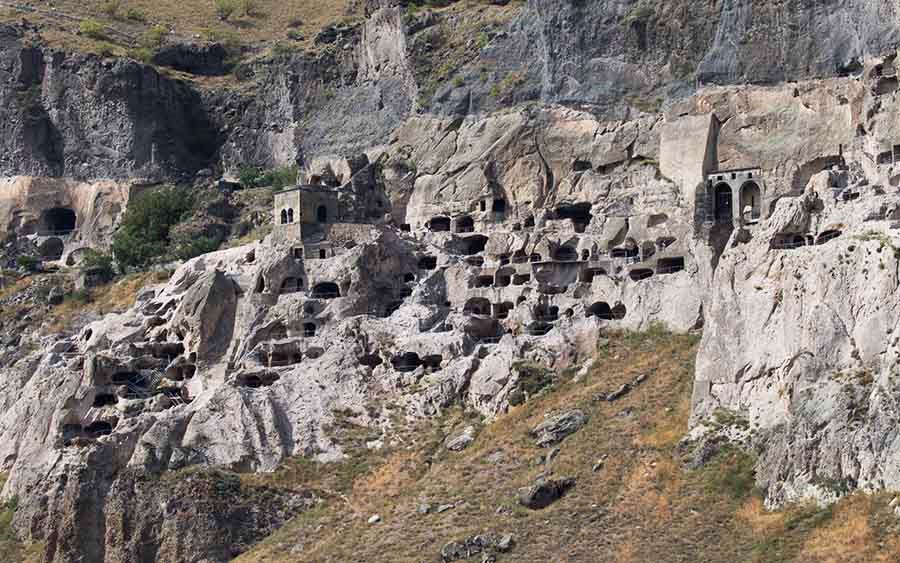
We will take a walk through the town where we should have no problem finding Western Rock Nuthatch, Blue Rock Thrush, Red-fronted Serin, Eurasian Crag Martin, Black Redstart, Rock Bunting, Rock Sparrow, Chukar Partridge, and plenty more interesting species including migrants like Common Rosefinch, Red-breasted Flycatcher, and Common Redstart. We may also come across the localized endemic subspecies of Mountain Chiffchaff (and a potential split).
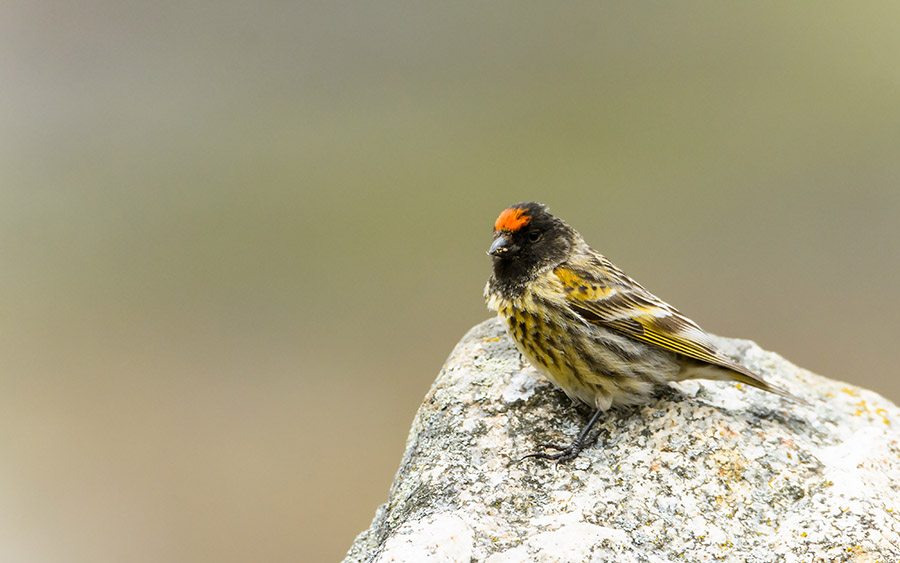
This area is also superb for birds of prey and scanning the skies should give us resident Griffon Vulture, Cinereous Vulture, Bearded Vulture, Golden Eagle, Common Buzzard (of the resident menetriesi subspecies, rather than the migratory vulpinus subspecies), and Eurasian Goshawk, along with migrant species like Eurasian Sparrowhawk, Short-toed Snake Eagle, Eastern Imperial Eagle, Common (Steppe) Buzzard, and Long-legged Buzzard.
Overnight: Vardzia
Day 3. Birding the lakes of the Javakheti volcanic region
Today we will see Georgia’s landscapes at their wildest. We will head to the beautiful lake region that borders the Javakheti National Park, an ancient volcanic region on the border with Turkey and Armenia. We will visit three lakes (all are IBAs): Khanchali Lake, Madatapha Lake, and Bughdasheni Lake, and will spend the day watching the wonderful wildlife that resides here. Arguably the most impressive spectacle here is the hundreds of Ruddy Shelduck that can be found on Lake Bughdasheni, with a huge supporting cast of other species such as Eurasian Teal, Common Pochard, Garganey, Northern Shoveler, Gadwall, Eurasian Wigeon, Mallard, Northern Pintail, and the rarer Ferruginous Duck. Another spectacle here is thousands of post-breeding and overwintering Eurasian Coot that should have arrived by the time of our tour.
Shorebirds are also likely to be evident here with migratory species like Pied Avocet, Northern Lapwing, Common Ringed Plover, Ruff, Common Snipe, Wood Sandpiper, and Kentish Plover all possible. We should also make sure we check any gulls carefully as the range-restricted and Near Threatened (BirdLife International) Armenian Gull regularly occurs here.
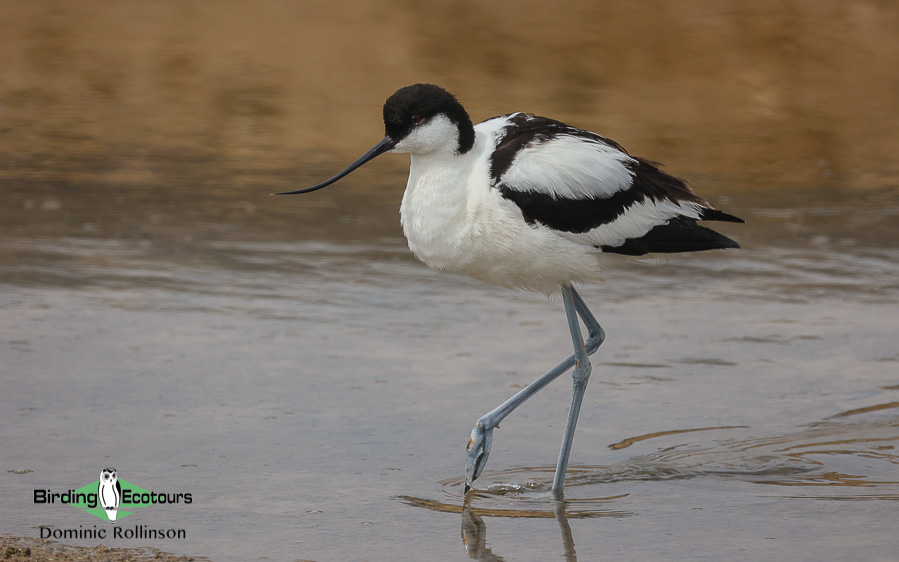
Khanchali Lake has by far the greatest diversity of passerine species of the three lakes and here we should come across species like Eurasian Penduline Tit, Mountain Chiffchaff, Bluethroat, Red-breasted Flycatcher, European Stonechat, Red-throated Pipit, Water Pipit, Citrine Wagtail, and the Siberian subspecies of Common Chiffchaff.
While in the region we should come across several raptor species, drawn to the area by the abundant prey on offer. Species are likely to include Western Marsh Harrier, Lesser Spotted Eagle, Hen Harrier, Long-legged Buzzard, and Common Buzzard. We should also check the skies for the giant Great White Pelican, and Near Threatened (BirdLife International) Dalmatian Pelican as both of these species can be seen here during fall. Finally, we will scan flocks of the nominate migratory subspecies of Common Crane (grus) for the exceptionally rare resident Caucasian subspecies (archibaldi) that can be found foraging together in this region. This recently described subspecies is one of the world’s rarest birds with just 95 pairs known in the world. It can be distinguished from the nominate form by its lack of a red crown, an interesting bird that warrants further study.
Overnight: Vardzia
Day 4. Birding the Zekari Pass and Goderdzi Pass, travel to Batumi
Today will see us leave the Lesser Caucasus Mountains behind as we continue west towards the Black Sea coast. This is around a six-hour journey, but we will break the drive up with birding and stops to admire the beautiful scenery. Our final stop in the Lesser Caucasus Mountains will be the stunning Zekari Pass and Goderdzi Pass, deep in the mountains. The scenery here is another level of breathtaking and it will make a beautiful area for birding.
On the way through these mountain passes, we will make stops to look for birds like Alpine Chough, Northern Raven, Water Pipit, Mountain Chiffchaff, Alpine Accentor, Red-fronted Serin, Black Redstart, Coal Tit, Eurasian Jay, Red Crossbill, and Common Blackbird. Migrating birds of prey like Steppe Eagle, Western Marsh Harrier, Hen Harrier, Montagu’s Harrier, Pallid Harrier, and Lesser Kestrel are possible here and overhead we should see migrating European Bee-eater. The more remote forests also hold good numbers of Krüper’s Nuthatch and we may get to see one of these great birds today.
As we climb towards the area known as the Zekari Windows, we will look for the real gem of this area, Caspian Snowcock. Although it is an exceedingly rare bird in this part of Georgia, we will put effort into trying to see this beautiful species. Also, around this area we can find fields carpeted in Colchicum speciosum steven, a Caucasian endemic, fall-flowering, herbaceous, perennial plant found only in this part of the country.
From the Zekari Windows we will continue our drive through the remote mountains, stopping at convenient points for birding and to admire the scenery, before dropping down towards the coast and the bustling city of Batumi, our base for the next week of thrilling birding adventures.
Overnight: Batumi
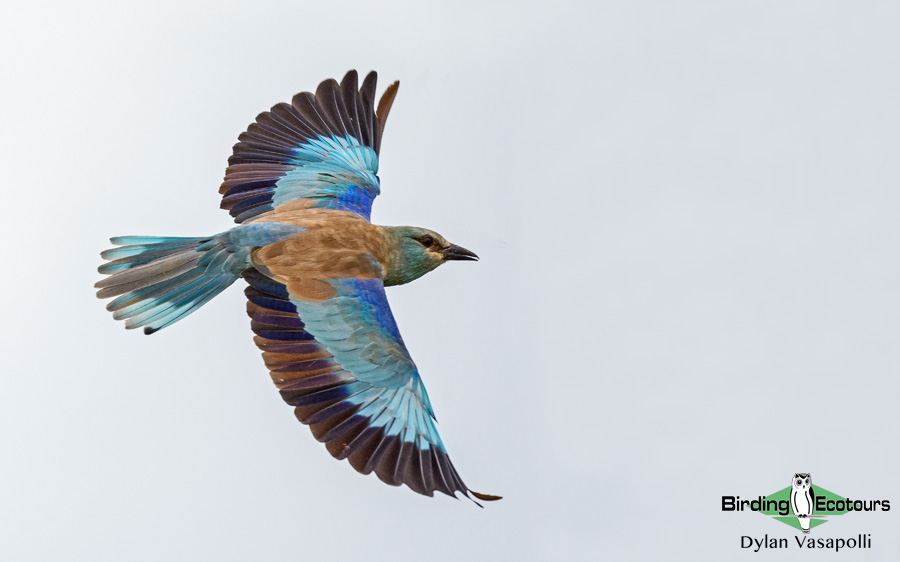
Days 5 – 11. Birding the Batumi Bottleneck and surrounding areas
We will spend the next seven full days in one of the world’s greatest migration hotspots, the Batumi Bottleneck. The Black Sea and the Lesser Caucasus Mountains funnel migrating birds into this narrow stretch of land as they migrate south during fall. When the weather conditions are right, the number of birds moving through here is overwhelming, with sometimes over 100,000 birds of prey moving overhead in a single day! Combine this with significant numbers of shorebirds (waders), wildfowl, herons, egrets, storks, pelicans, and an eclectic mix of passerines (of many families), and you have an unforgettable experience.
In addition to spending time at the bottleneck itself, we will also visit some of the many other fantastic birding locations in the local area, for what is certain to be an exhilarating week’s birding. As this portion of the tour is flexible, to maximize our enjoyment of the migration, we have broken down the next seven days by sites, rather than a specific day-by-day account. You can see even more information about these sites by clicking on the subtitle links.
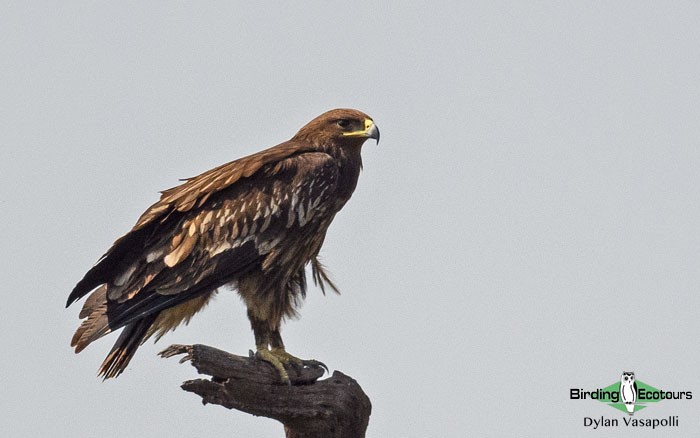
Batumi Bottleneck Raptor Observatories
The villages of Sakhalvasho and Shuamta both have observatories for watching and counting the bird of prey migration. These observatories are in stunning evergreen forest which has a sub-tropical climate with high temperatures and significant rainfall across the year. Of course, it is the birds of prey that we are mainly here to see and, as the name of this tour indicates, this is the peak period of the eagle migration. Moving over us, sometimes just meters above us, could be Steppe Eagle, Lesser Spotted Eagle, Greater Spotted Eagle, Short-toed Snake Eagle, Booted Eagle, Eastern Imperial Eagle, and occasionally even Golden Eagle and White-tailed Eagle. A mighty and impressive collection of some of the best raptors in the region.
The list of other likely birds of prey is vast. Common and frequently recorded species include European Honey Buzzard, Western Marsh Harrier, Montagu’s Harrier, Levant Sparrowhawk, and Black Kite. These migratory species are often hounded by the resident Eurasian Sparrowhawk, Common Kestrel, and Eurasian Goshawk and aerial battles are a common and spectacular sight.
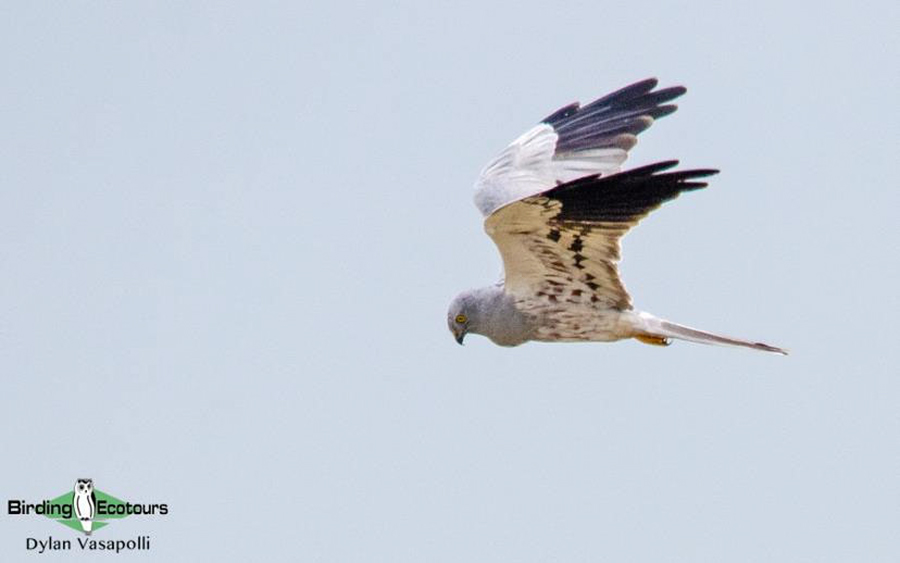
Rarer, but still frequently seen species could include Pallid Harrier, Hen Harrier, Common Buzzard, Long-legged Buzzard, Osprey, Egyptian Vulture, and Peregrine Falcon. There are also several scarce species that are recorded every season that we will hope to see, such as Rough-legged Buzzard, Lesser Kestrel, Red-footed Falcon, Saker Falcon, Eurasian Hobby, Merlin, Griffon Vulture, and Black-winged Kite. Finally, recent years have seen an increasing number of Crested Honey Buzzard, an exceptionally rare species in the Western Palearctic and a huge bonus if we are lucky to see one during our time at the stations.
Our visit to these stations should also be well timed to witness large flocks of Black Stork, European Bee-eater, and European Roller moving overhead, or even sometimes at eye level! Occasionally we may get a surprise with Blue-cheeked Bee-eater, Dalmatian Pelican and Great White Pelican moving through the area along with Common Crane and White Stork, which are rarer migrants here. The spectacle of visible migration is a seriously thrilling event.
The thick forests around the watchpoints make great places to find migrating passerines like Red-breasted Flycatcher, Mountain Chiffchaff, Green Warbler, Red-throated Pipit, Ortolan Bunting, Citrine Wagtail, Isabelline Wheatear, Thrush Nightingale, and Collared Flycatcher, as well as top resident species including at least six woodpecker species: European Green Woodpecker, Black Woodpecker, Grey-headed Woodpecker, Lesser Spotted Woodpecker, Middle Spotted Woodpecker, and Great Spotted Woodpecker.
Batumi Botanical Garden
This beautiful sub-tropical garden was established in 1912 and contains a vast collection of flora from all over the world. The highlight bird here is the gorgeous Krüper’s Nuthatch and we will spend time looking for this species here. These gardens are an excellent migrant trap and large numbers of passage birds, particularly interesting passerines, can be found here.
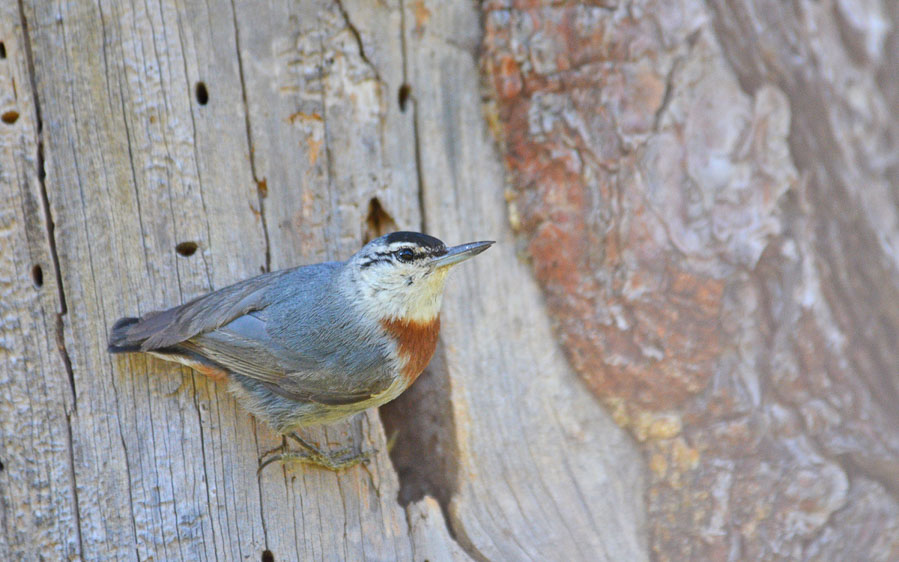
Chorokhi River Delta
This outstanding site is one of the best birding areas in Europe. The mosaic of marshes, ponds, mudflats, reedbeds, scrub, and beaches is a wonderful site for a huge number of resident and migrant species. Massive falls of shorebirds (waders) and passerines can occur here, and it really is a site to expect the unexpected. The number of migrant warblers here can make the bushes look like they are moving, with Common (Eurasian) Reed Warbler, River Warbler, Marsh Warbler, Barred Warbler, Eastern Olivaceous Warbler, Savi’s Warbler, Blyth’s Reed Warbler, Paddyfield Warbler, Moustached Warbler, Booted Warbler, and Lesser Whitethroat all regularly seen here. There are vast numbers of other passerines that we should come across here, including Greater Short-toed Lark, Turkestan Short-toed Lark, Tree Pipit, Tawny Pipit, Richard’s Pipit, Red-throated Pipit, Western Yellow Wagtail, Citrine Wagtail, Northern Wheatear, Isabelline Wheatear, Pied Wheatear, Desert Wheatear, European Stonechat, and Siberian Stonechat.
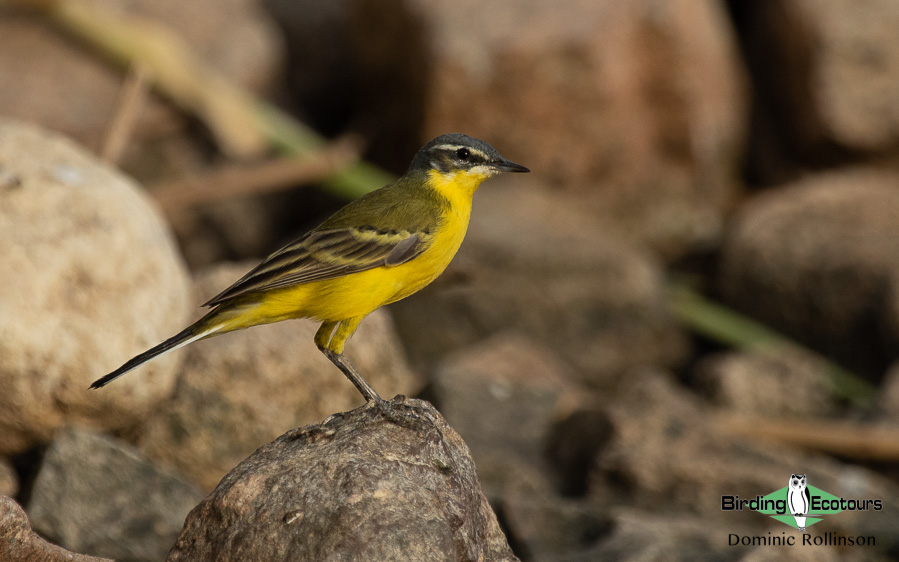
The mudflats and ponds are where we can find specials like Squacco Heron, Grey Heron, and Purple Heron, while reedbeds hold Little Crake, Baillon’s Crake, and Little Bittern. The wet grass meadows are good spots to look for Common Snipe, Jack Snipe, Great Snipe, and Grey-headed Swamphen, while the sandbars on the river often hold Collared Pratincole, with the rarer Black-winged Pratincole occasionally mixed in with them. These sandbars can also sometimes hold the Critically Endangered (BirdLife International) Sociable Lapwing, and we will hope we are lucky during our tour and connect with this very rare species. We may also come across the stunning duo of Rosy Starling and European Roller as they move around the open areas, providing an extra blast of color! The delta is also an excellent place for finding rare species, with recent records of Black-crowned Sparrow-Lark, Egyptian Nightjar, Little Bustard, and Oriental Turtle Dove, meaning we really must be ready for literally anything, from all directions of the compass! Exciting!
The ecologically rich seas here support many gull species, and we should come across Little Gull, Black-headed Gull, Yellow-legged Gull, Caspian Gull, Slender-billed Gull, Armenian Gull, and the massive Pallas’s Gull. We can also find two distinct subspecies of the widespread Lesser Black-backed Gull complex here – Baltic Gull (fuscus) and Heuglin’s Gull (heuglini) – sometimes treated as specific species, but not currently by the IOC, which we follow at Birding Ecotours.
Finally, if the conditions allow, we may spot interesting seabirds from the river mouth, in the form of Parasitic Jaeger (Arctic Skua), Pomarine Jaeger (Skua), and Yelkouan Shearwater.
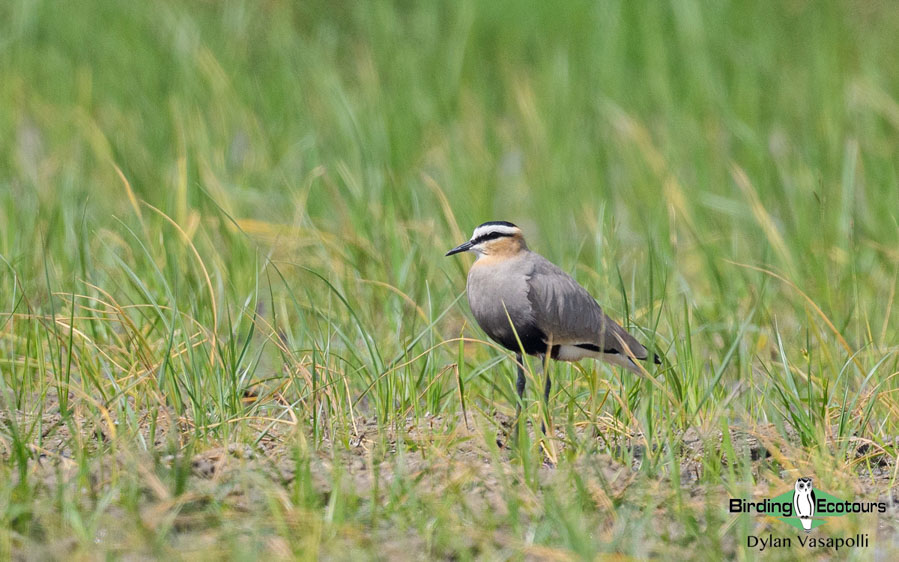
Mtirala National Park
This beautiful national park is an ancient forest area which has its own microclimate, with an annual rainfall of 157 inches (4,000 millimeters) per year. This area contains a rich diversity of Caucasian regional endemic species and subspecies of flora and fauna, including Pontic Rhododendron, Caucasian Salamander (janashvilii subspecies), Caucasian Parsley Frog, Caucasian Toad, and Kintrishi Earthworm!
The forest here is also teeming with common and gorgeous European bird species, such as Eurasian Blue Tit, Great Tit, Eurasian Nuthatch, European Robin, and Common Chaffinch, but is also home to specials like Mountain Chiffchaff, Green Warbler, and Red-breasted Flycatcher. Along the river here we could find White-throated Dipper, and day roosting Long-eared Owl, Tawny Owl, and Eurasian Eagle-Owl are possible too. Mtirala is also famous for its seven woodpecker species, with White-backed Woodpecker, Grey-headed Woodpecker, Black Woodpecker, Lesser Spotted Woodpecker, Middle Spotted Woodpecker, European Green Woodpecker, and Syrian Woodpecker all being found.
The national park is also home to several interesting mammals and these include Golden Jackal, (European) Grey Wolf, Red Fox, Northern Chamois, European Roe Deer, (Eurasian) Brown Bear, and Eurasian Lynx. We may also find fascinating reptiles like Aesculapian Ratsnake and the Endangered (IUCN) Caucasian Viper. This is another example of a wonderful site we will have to explore in this biodiverse landscape.
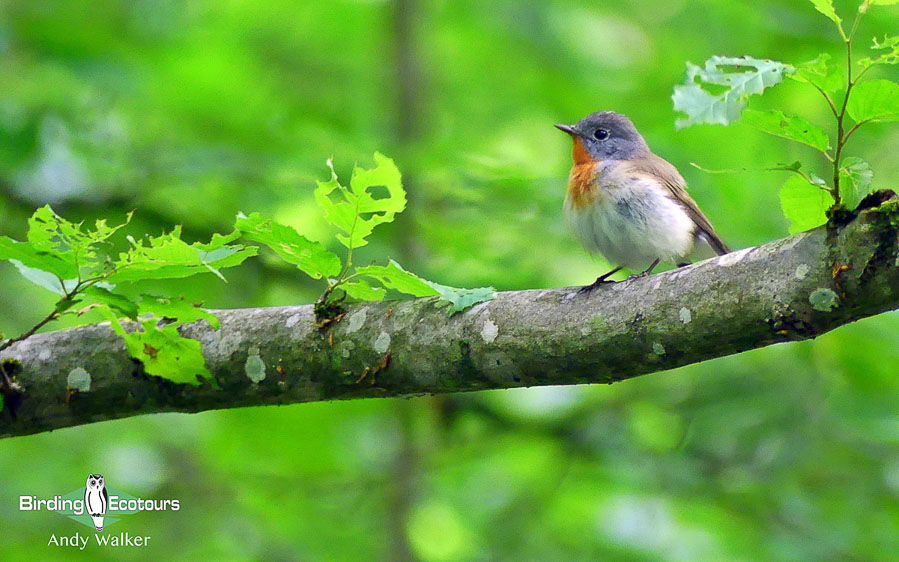
Batumi Boulevard
This attractive boulevard runs parallel to the Black Sea coast. Popular with tourists, and with an active nightlife scene, this area is also fabulous for finding migrant birds (and the reason we will be here!). The trees and bushes often hold Red-breasted Flycatcher, Green Warbler, Eastern Olivaceous Warbler, Bluethroat, European Nightjar, and many others. We may also find rare vagrants to Georgia like Pallas’s Leaf Warbler and Yellow-browed Warbler, with both species becoming more frequently observed over recent years.
Paliastomi Lake
This large lake to the north of Batumi is part of the wider Kolkheti National Park and is also an IBA. Here we will take a three-hour boat trip across the lake and into the Pichori River where we can observe White-tailed Eagle, Osprey, and many of the migrating raptors mentioned earlier in the itinerary. Other interesting species found here include Armenian Gull, Great Egret, Eurasian Hoopoe, Common Kingfisher, Hooded Crow, large numbers of hirundines like Sand Martin, Barn Swallow, and Common House Martin, Western Cattle Egret, Glossy Ibis, and wildfowl such as Eurasian Wigeon, Common Pochard, and Tufted Duck.
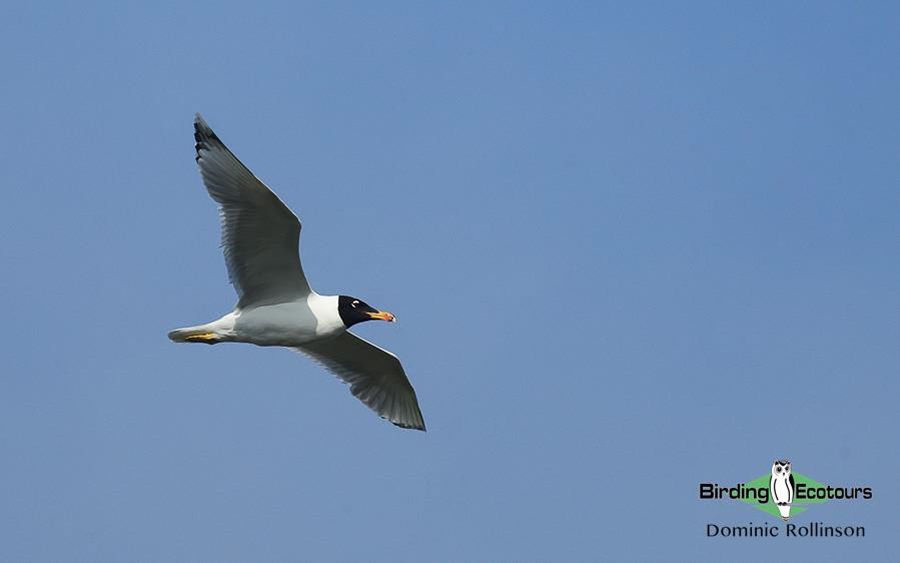
Maltakva River Mouth
This extensive sandy beach, opposite Paliastomi Lake, is an excellent site for finding shorebirds (waders), gulls, and terns. Shorebirds can gather here en masse, with Terek Sandpiper, Broad-billed Sandpiper, Eurasian Stone-curlew, Red-necked Phalarope, Pied Avocet, Curlew Sandpiper, Eurasian Oystercatcher, European Golden Plover, Kentish Plover, Grey Plover, and Ruddy Turnstone all present here throughout the fall season. These more common species have, in recent years, been joined by the much rarer Greater Sand Plover, and we shall look out for these amongst the inevitable flocks we encounter. A range of terns are also likely to be inhabiting the beach, with Common Tern, Little Tern, Sandwich Tern, Whiskered Tern, Gull-billed Tern, Caspian Tern, White-winged Tern, and Black Tern all frequently found here. Finally, the surrounding reedbeds should give us excellent views of Little Crake and Spotted Crake, two very secretive species that can show well at this time of year.
Overnight (seven nights): Batumi
Day 12. Transfer to Svaneti with birding en route
Today we will reluctantly leave Batumi behind and head north along the Black Sea coast before cutting inland towards the Greater Caucasus Mountains of Svaneti IBA. We are sure to be sad leaving the Batumi birding mecca behind, but plenty of other wonderful birds are on offer over the last couple of days of the tour as we complete a circuit away from the city.
Our drive from here to the mountains is around six hours, however we will make more stops for birding as we progress along the route, and of course we will enjoy the beautiful scenery as the impressive mountains begin to emerge in front of us. We will plan to reach our end destination for the day, Mestia (our base for the next two nights), during daylight hours and we will immediately start exploring the areas around the town which can be very productive for birds.
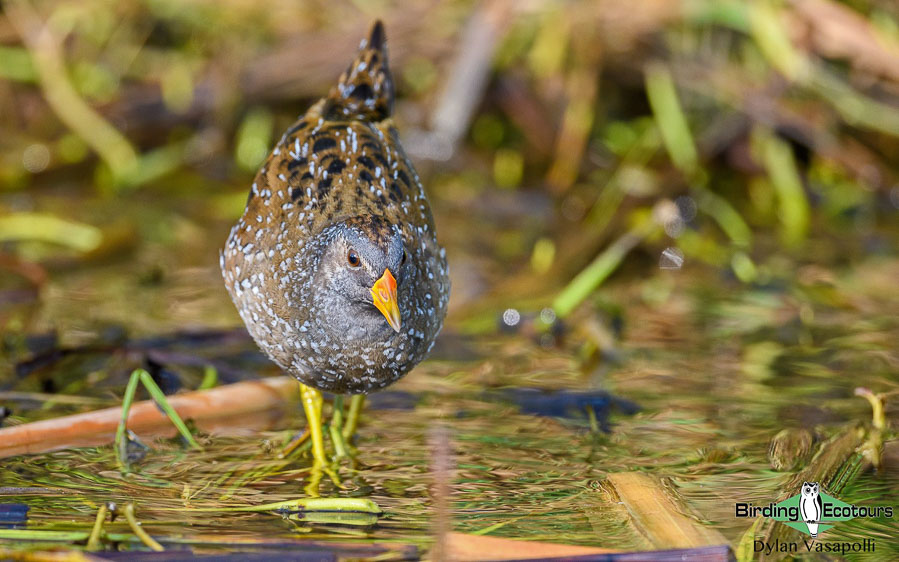
The small town of Mestia sits right in the heart of the Greater Caucasus Mountains and the scenery here is out of this world. We should have little trouble finding common species like Black Redstart, Northern Raven, Goldcrest, Common Chaffinch, Eurasian Blue Tit, and Great Tit, but the habitat around town may also hold Siberian Stonechat, Alpine Chough, Horned (Shore) Lark, Alpine Accentor, Water Pipit, and White-throated Dipper. We may even get lucky and hear the iconic call of the beautiful Caucasian Snowcock, although we stand a better chance of seeing this species the next day.
Overnight: Mestia
Day 13. Birding Mount Tetnuldi and Ushguli village
Today we will explore the beautiful areas around Mount Tetnuldi, the peak of which is around 16,000 feet (4,858 meters) above sea level, which makes it the 10th highest peak in the Greater Caucasus range. We will begin our day in the dark as we drive up the narrow mountain roads to reach our first viewpoint. As the first light begins to appear, we will scan nearby slopes for the first star species of the day; the early morning light should soon reveal the first movements of the endemic Caucasian Grouse. This stunning species is similar in appearance to the more widespread Black Grouse, but lacks a lot of the white plumage and heavily curved tail feathers of this closely related species. This is a highly prized and geographically localized species and one that we will take time to enjoy in our stunning surroundings.
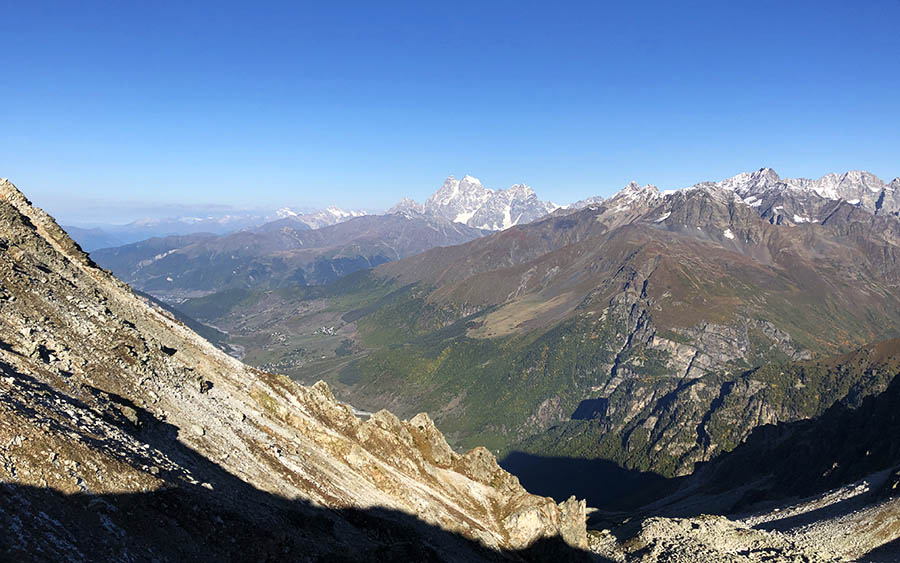
Next, we will drive higher into the mountains for yet another highly prized Caucasian endemic. As we scan the slopes in front of us, we might hear the haunting call of the Caucasian Snowcock, our first clue that this great species is close by. We may only be afforded scope views of this shy species, as they are often quick to take flight when they see people, but with luck we may get closer views and could have the opportunity to take photos, if they play ball!
Later, we will continue to explore the high slopes for two more of our special targets for the day. As we search the bushes and scrub, we will keep our eyes peeled for the gorgeous Great Rosefinch and the equally striking Güldenstädt’s Redstart. The former is a localized subspecies and touted as a potential split, the latter is a difficult species to find here, but we may have another chance of seeing them at further site later in the day, and on the next day too.
These mountains are not just home to the above key species but also a wide range of other mountain specialists. Throughout the day we should come across Alpine Chough, Alpine Accentor, Black Redstart, Horned (Shore) Lark, Red-fronted Serin, Bearded Vulture, Northern Raven, and Water Pipit. The mountains are also a good place to find migrants and we should see birds of prey moving through the valleys and passerines like Northern Wheatear in suitable areas of habitat.
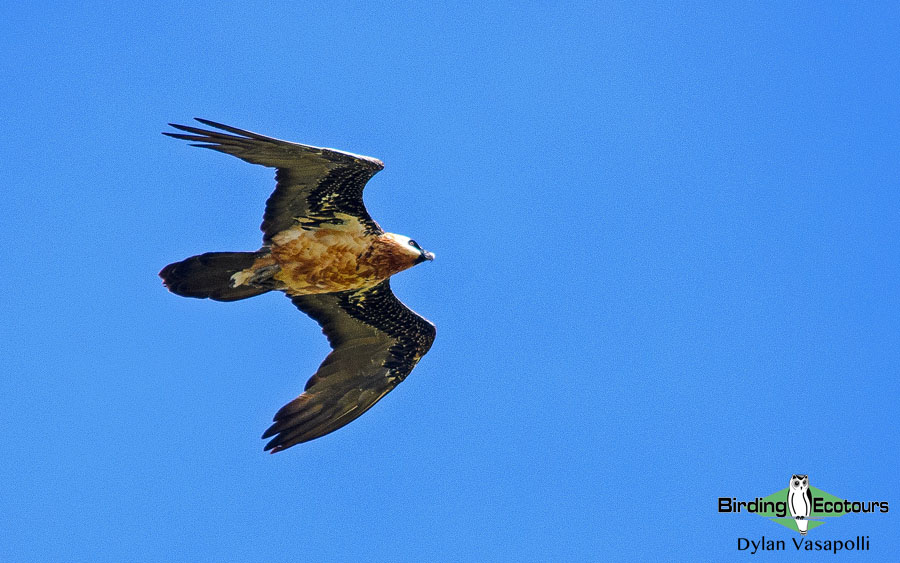
Lower down the mountain we find extensive woodland slopes where we may come across Ring Ouzel, Hawfinch, Eurasian Bullfinch, Ortolan Bunting, Coal Tit, Mountain Chiffchaff, and Krüper’s Nuthatch. The area around Tetnuldi is also home to the beautiful alpine flower Crocus scharojanii rupr, another Caucasian endemic and restricted to the western Greater Caucasus Mountains.
After a morning in the high peaks, we will descend towards the ancient community of Ushguli. This collection of remote villages, home to only 200 people, lies deep in the mountains and looks as if they have not changed for centuries. This area is part of the Upper Svaneti UNESCO World Heritage Site and is worth seeing in its own right, but the birds make it extra special for us!
This area, well off the beaten track, is excellent for birds of prey with Bearded Vulture, Griffon Vulture, and Cinereous Vulture all likely. Migrant birds of prey should be moving through the mountain passes too, with European Honey Buzzard, Short-toed Snake Eagle, and Egyptian Vulture being the most frequently observed.
We also have another chance of seeing the stunning Güldenstädt’s Redstart here, while we may also find migrating birds like European Turtle Dove, European Bee-eater, Common Cuckoo, Common Swift, Lesser Grey Shrike, Whinchat, Song Thrush, and Northern Wheatear. The houses and cliffs here are also home to good numbers of Eurasian Crag Martin and Alpine Swift.
This area is also a good location for finding the locally rare Black Darter dragonfly. This is a common species elsewhere in Europe and Asia, but the Caucasian population is cut off from the main population by the high mountains here and may well be a unique species.
Overnight: Mestia
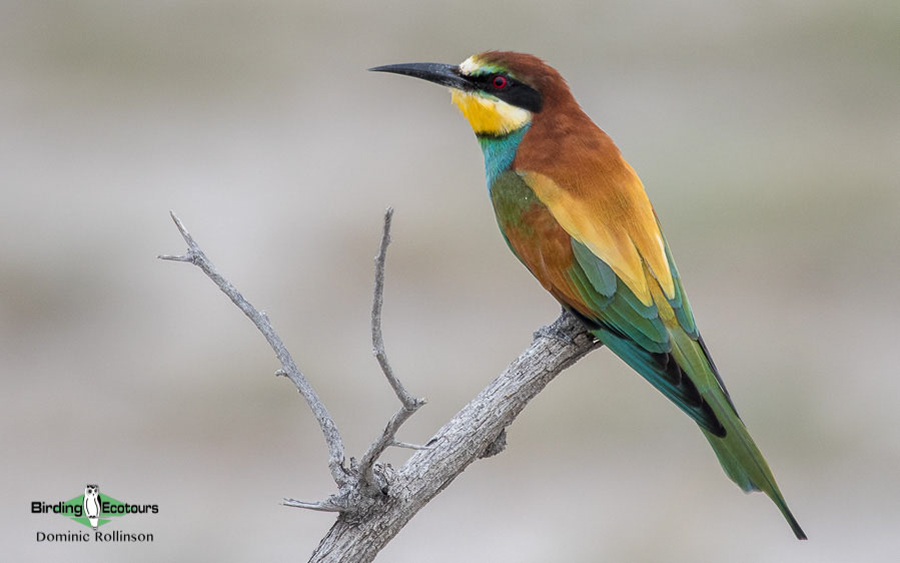
Day 14. Birding Tetnuldi and transfer to Batumi
We will repeat our exploration of Tetnuldi in case we have missed any of the star species the day before. Once we have enjoyed this beautiful mountain range, and taken plenty of photos, we will make the journey south back towards Batumi, stopping en route at favorable birding sites.
We expect to arrive back in Batumi in the early evening where we will be staying for our final night of the tour. We will have a final run through the trip list, help with any last-minute identification or taxonomical questions (there could be a few with the interesting subspecies likely to have been observed during the tour). We will then have to decide on our ‘bird of the trip’, no mean feat; will it be one of the amazing birds of prey that we will have seen, or maybe one of the localized resident species, or the myriad of migrant shorebirds, gulls, wildfowl, or passerines – the potential is huge!
Overnight: Batumi
Day 15. Transfer to Batumi Airport where the tour ends
After our final traditional Georgian breakfast, we will depart our hotel for the Batumi International Airport with departures from the airport taking place from 10am.
Overnight: Not included
Please note that the itinerary cannot be guaranteed as it is only a rough guide and can be changed (usually slightly) due to factors such as availability of accommodation, updated information on the state of accommodation, roads, or birding sites, the discretion of the guides, and other factors. In addition, we sometimes have to use a different guide from the one advertised due to tour scheduling or other factors.
Download ItineraryUseful Information
During our Georgia tour we will be driving around in a comfortable vehicle. This tour does involve longer walks than on many of our other tours, including some on rough/steep terrain. Additionally, the walk up to the migration watchpoints, while short, is steep in places and the heat and humidity at this time of year can make these walks fairly tough, for a short duration, but we will have plenty of rest, as needed, while we enjoy watching the passage migration. Altitude should not be a major factor during the tour, but it is worth considering the climatic conditions and types of walking that will be undertaken. We will obviously take as much time as is needed as we walk about, to ensure everyone is able to get around safely.
Despite its small size, we will experience three quite different climatic zones in Georgia. The start of our tour in the central lowlands will see daytime temperatures range from 86 – 90oF (30 – 32oC), before we head into the slightly higher Lesser Caucasus Mountains, where daytime temperatures range from 70 – 77oF (21 – 25oC). By the time we reach the Black Sea coast the humidity will have climbed significantly, and temperatures will be like those in the central lowlands. Finally, in the Greater Caucasus Mountains, we can expect daytime temperatures of between 57 – 70oF (14 – 20oC) in lower areas, but significantly lower in the higher altitudes, with snow being likely.
Georgian food and hospitality are superb, and all your accommodation will be well appointed in a traditional style with private bathrooms throughout. We will be in the heart of this traditional and fascinating country where the wildlife is abundant, even in the villages and towns and is sure to add to an amazing once-in-a-lifetime experience.
